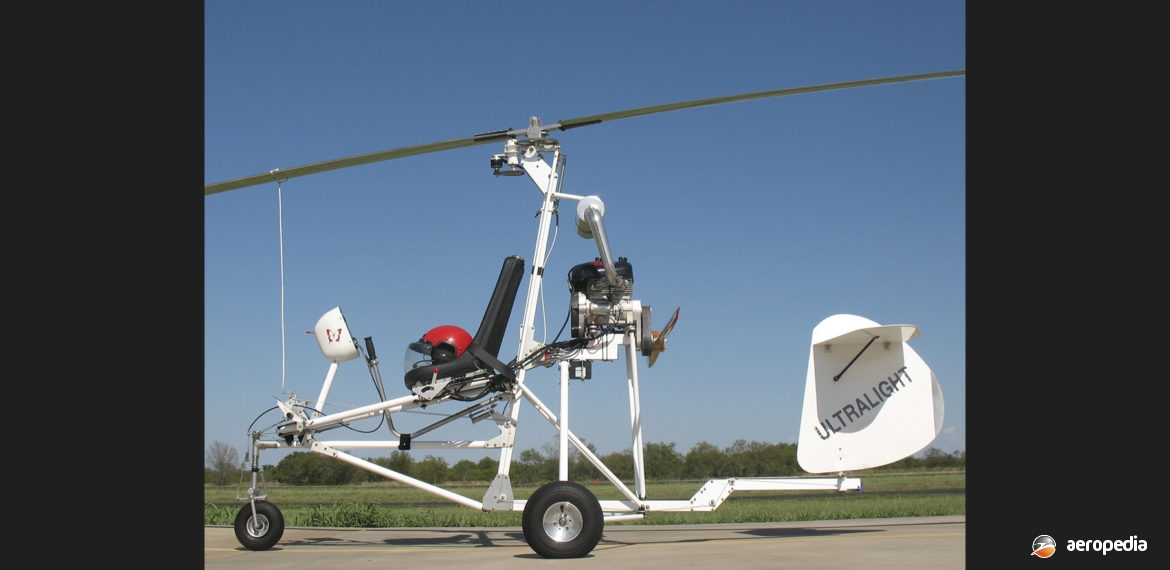Photograph:
A new GyroBee on completion in the United States (Star Bee Gyro)
Country of origin:
United States of America
Description:
Single-seat light sport gyrocopter
Power Plant:
One 34 kw (45 hp) Zanzottera MZ-201 two-cylinder, two-stroke, air-cooled engine
Specifications:
- Main rotor diameter: 7.31 m (24 ft)
- Max speed: 110 km/h (68 mph)
- Cruising speed: 85 km/h (53 mph)
- Rate of climb: 180 m/min (590 ft/min)
- Empty weight: 112 kg (247 lb)
- Useful load: 137 kg (303 lb)
- Loaded weight: 250 kg (551 lb)
History:
The GyroBee was designed by Ralph Taggart of the Michigan State University and made available as free plans and documentation to interested builders. In due course it was produced in kit form by Star Bee Gyro of Worcester, Massachusetts for amateur builders. The prototype made its first flight in 1990 and subsequently kits were produced and supplied to builders around the world. It was designed to meet US FAR 103 Ultralight Vehicle Regulations and was a single-seater with an open cockpit and a tricycle undercarriage. It was powered by a two-cylinder Zanzottera MZ-201 dual-ignition engine in the pusher configuration driving a three-blade Ivoprop ropeller. Construction was of 6061-T6 aluminium tubing bolted together.
The prototype and early production aircraft were known as the Taggart GyroBee and plans were first supplied in 1990. The Star Bee Light was then produced in kit form by Star Bee Gyros and this model had a Sport Copter 7.0 m (23 ft) main rotor. This was followed by the Total Bee produced in kit form by Star Bee Gyros and fitted with a 7.0 m (23 ft) Dragon Wings Ivoprop rotor and the uprated 45 kw (60 hp) MZ-202 engine.
A few examples have been imported and completed in this region, including ZK-RDE (c/n 001), registered to its owner at Kerikeri, NZ in December 2006, ZK-RDA (c/n 002) registered to its owner at Parakai in March 2007, and ZK-DAP (c/n 3) in 2017.

